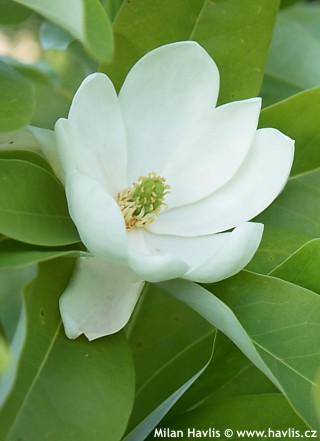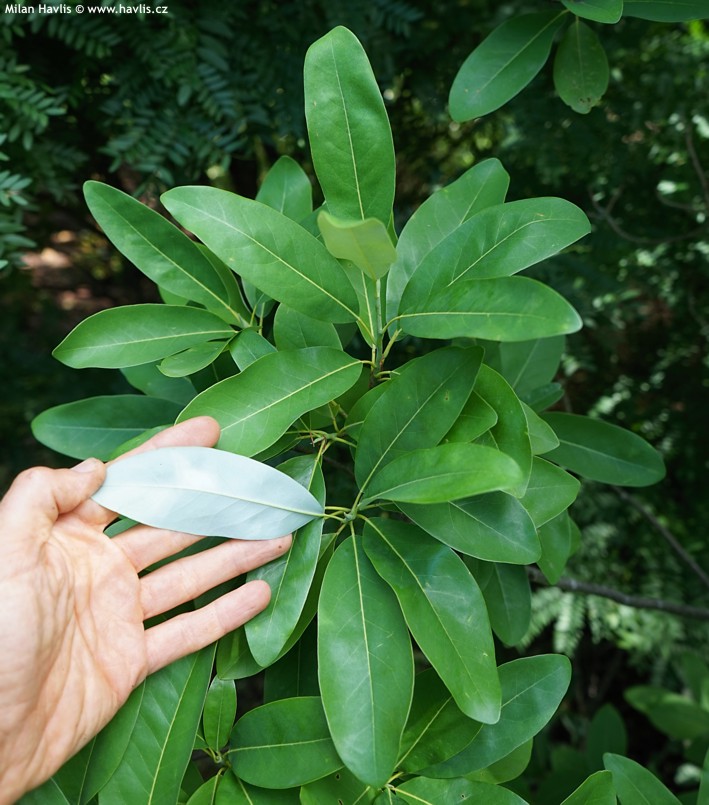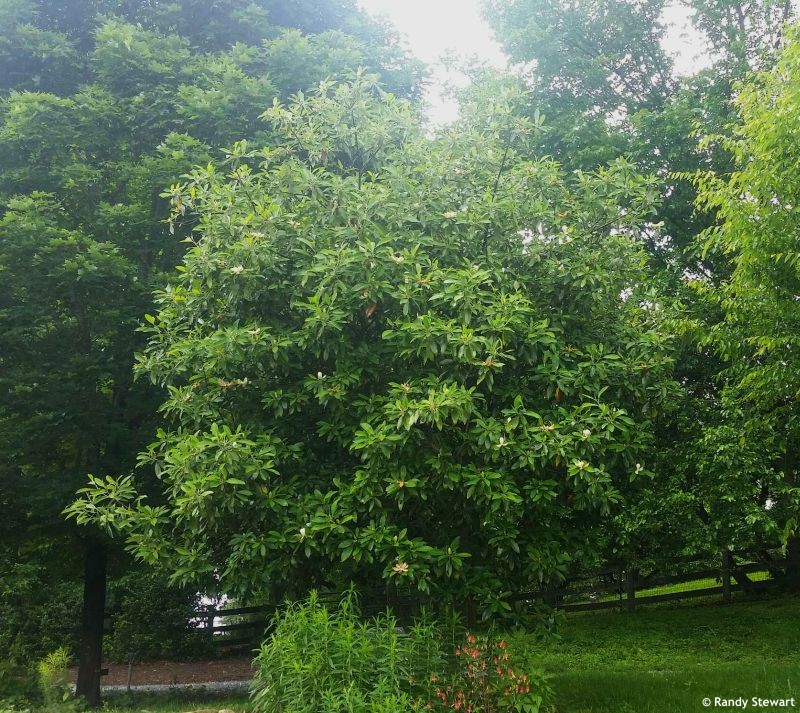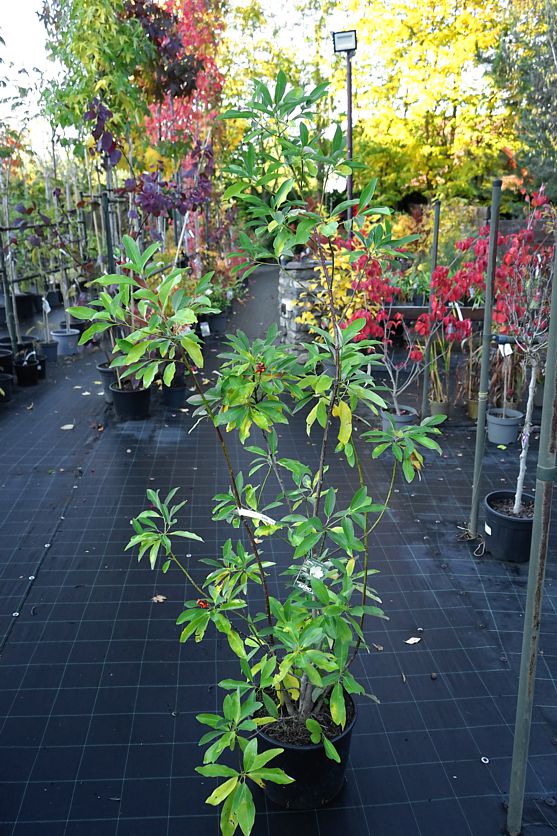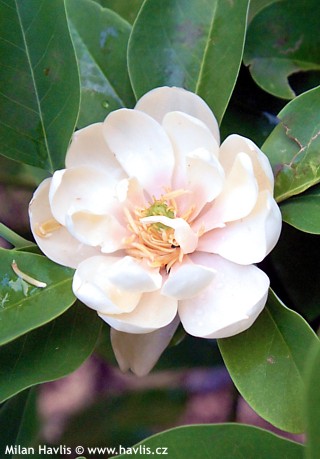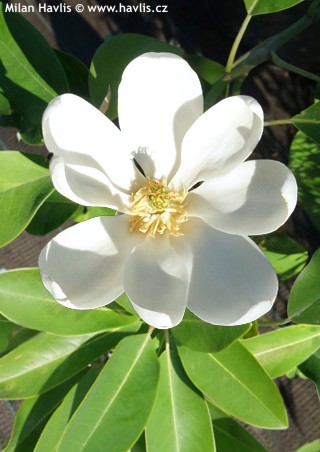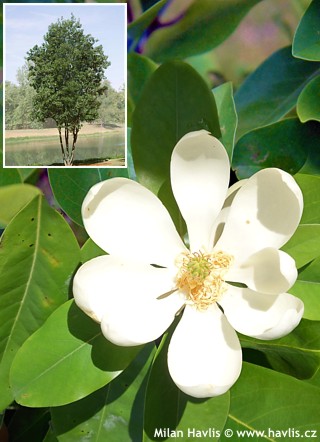Magnolia virginiana sweet bay, swamp magnolia
Sweet bay is a unique magnolia species that was first described by Carl Linnaeus, founder of modern taxonomy, already in 1753. Magnolia virginiana, that was the Latin name it received, was the very first magnolia species ever listed under this name. Interestingly, the plant had already been sent from America to England more than 50 years before that, by botanist John Baptist Banister. At that time the only magnolia known was a plant that was discovered on the island of Martinique by Charles Plumiére. Its local name was ‘talauma’. Magnolia virginiana was also the parent of later innovation known as bull bay magnolia – magnolia grandiflora.
Imagine passing by a green bush with pretty leaves but before you even take a glance at it you are struck by a cloud of highly sweet and pleasant fragrance coming from flowers that are only about 7-11 cm across. As if moonstruck your nose is dragged closer to the plant in order to find the perfume source. Sticking your nose inside the flower is the last thing you remember for a few dozens of seconds. Got a picture? This is what sweet bay magnolia is about.
It makes 5-7 cm wide flowers from early July until late August. They appear continuously one by one, never the whole shrub. Leaves are 15-20 cm long, widely obovate, deep green on the upper side and almost silvery green on the reverse. They are reliable evergreen only in the warmer zones, whereas in zones 5 and 6 they usually fall down by January. They are a little stronger than those on deciduous species but they are NOT leathery.
Sweet bay magnolia is usually a fast grower, especially young plants. It naturally appears in moist and wet lands of SE USA which is why it is sometimes referred to as swamp magnolia. The ability to grow and also thrive in water-logged conditions makes it ideal for Central European clay-based soils that tend to hold water for longer than other plants may sustain. Commonly it is rated hardy to USDA zone 5 with a remark that it might not be reliable at the coldest regions of zone 5.
Last update 18-12-2019
Goods are shipped all over Europe. For Russia and U.K. and for further details please read about SHIPPING OPTIONS HERE.
Are you interested in a serious discount for orders NOV-FEB? Check your options here.
THE PRICES INCLUDE VAT of 15%. For quick conversion you can use 1 CZK = approx. 0.04 EUR
- STANDARD QUALITY - Plants of this group are 1st class quality with number of branches and overall density adequate to their size and age, considering they were container grown.
- DE LUXE QUALITY - This label guarantees a luxurious quality of manually selected plants that, compared to their height and age, are exceptionally dense and beautiful.
- EXTRA - These plants are usually mature and bigger specimens with exceptional overall appearance.
- STANDARD (as described in the plant form) means a tree with a trunk of 190-210 cm and a crown at the top, unless specified differently. The commercial size for trees is their girth measured in the height of 1m from ground.
- HOBBY - These plants are of the same quality as our standard-quality plants but younger and therefore cheaper.
- SHRUB - a woody plant with branches growing bushy from the ground level.
- HALF-STANDARD or MINI-STANDARD - a small tree with shorter trunk, its size is usually specified.
- FEATHERED - These are trees with branches growing already from the base of the trunk and up along the stem.
- GRASSES and PERENNIALS - Sizes given usually read the diameter of the pot or the clump, as specified.

































